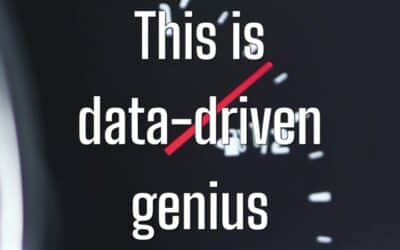In When: The Scientific Secrets of Perfect Timing, a new book published this month, author Daniel Pink shows how timing is everything, and how it’s a science, not an art.
The Daily ‘When’
The first part of the book looks at the best times of the day to perform analytical tasks, creative tasks requiring insight, and to make decisions. Drawing on a wide set of scientific research, the book demonstrates how everyone’s day is divided into three stages:
- Peaks, when your cognitive abilities, mood and emotional balance are at their highest levels. You should perform analytical tasks and decision making at these times.
- Troughs, when the above characteristics are at their lowest levels. Interestingly, these are the best times to perform creative, insight-driven tasks.
- Rebounds, when these characteristics again rise, but not quite to peak levels.
When different people experience each of the three stages each day depends, primarily, on whether they are ‘larks’ (early risers, early to bed), ‘owls’ (late risers, late to bed) or somewhere in between. This in turn depends on each individual’s makeup but also changes with age (most children are larks, most teenagers are owls).
Larks and those in-between account for about three-quarters of the population. They experience their days as follows:
- A morning peak.
- An afternoon trough.
- An evening rebound.
Owls make up the remaining quarter, and their days look like this:
- A morning rebound.
- An afternoon trough.
- An evening peak.
So everyone’s cognitive abilities are at their lowest in the afternoon, larks and in-betweens are at their ‘analytical, decision making’ best in the morning and owls in the late afternoon and evening.
Applying This Knowledge to Become a More Intelligent Business
The perfect timing
On a personal level, depending on the level of control you have over your day, you can try to structure it so that you align with your peak, trough and rebound periods.
For example, if you are a lark you can try to organise your day so that you get analytical tasks done in the morning when you are at your cognitive best, and save email checking and administrative tasks until the afternoon.
However, not everyone has this level of control over their day, and this is where organisations can help people to do their best with BI.
BI isn’t just about data, information and tools, it’s also about the people and processes which use them to help achieve an organisation’s goals and objectives. An intelligent organisation will realise this and will look at optimising their processes where possible (and practical) to take advantage of when people are at their best.
For example, process steps that involve analytical tasks or decision making should ideally not be done in the afternoons, whereas process steps requiring creativity should be. Where possible, processes should give people the autonomy to decide for themselves when they perform activities, so they can align with their peaks, troughs and rebounds. You should time meetings, depending on their goal, so that they allow people to make the best use of their peak time, and not be ‘tired out’ by a meeting that coincides with this.
And whilst, of course, this is all fine in theory, real-world practicalities and constraints often mean that an organisation can’t tailor its processes to align perfectly with people’s peaks, troughs and rebounds. However, the book gives some practical advice in this area too – there are various ways to still improve processes if, for example, a decision-making step must take place in the afternoon. These include preceding the activity with a checkpoint to complete a checklist and increase focus on the task at hand, recognising that this person needs this bump in attention during trough periods.
When an organisation gets this right, everyone wins – people are happier and more fulfilled as their work patterns align better with their natural daily phases, and organisations gain the double benefit of happier people and more effective processes, which in turn allows them to better achieve their goals and objectives.
You can find out more in the book, which I highly recommend if you want to learn more (and get practical advice) on applying the science of timing, both at the daily and lifetime level.
For further insights like this, check out our other blogs here!





0 Comments